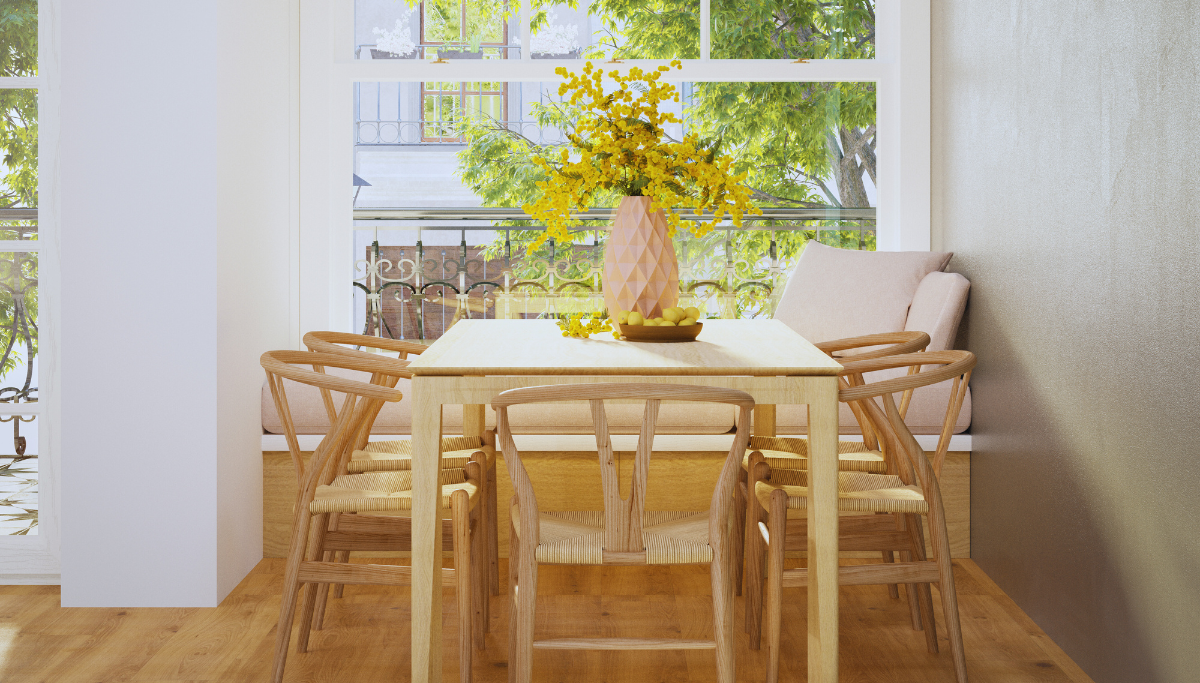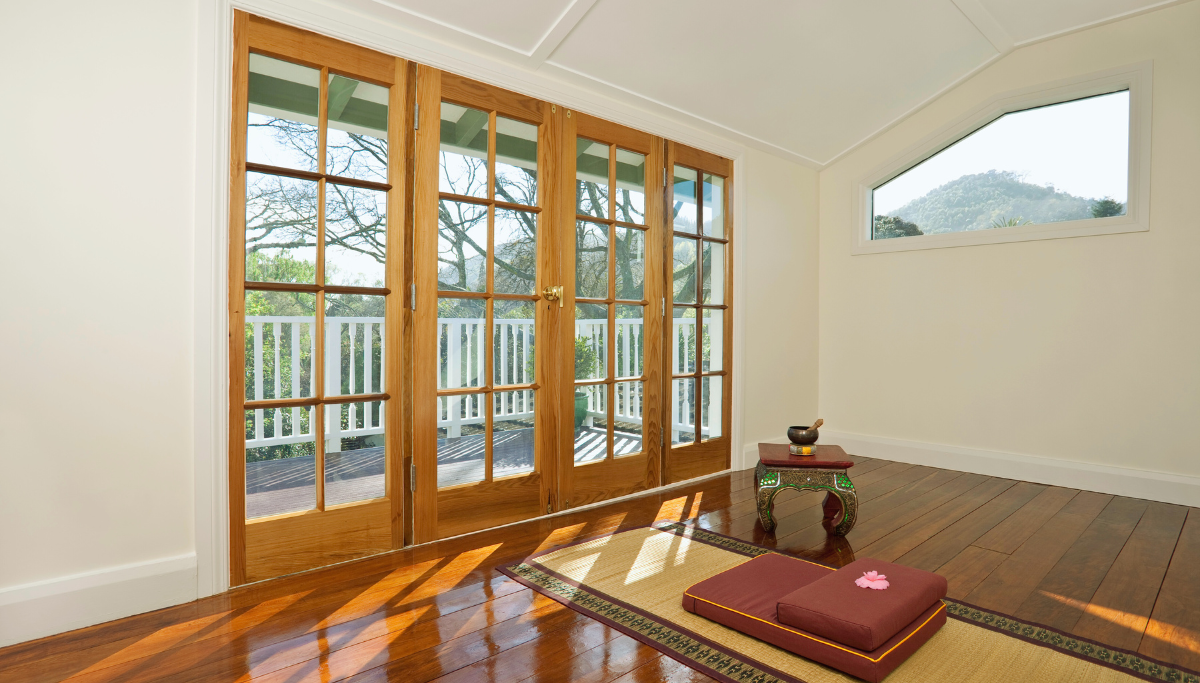

In today’s fast-paced world, a meditation space can be a sanctuary for mental clarity and relaxation for everyone. Whether you live in a spacious home or are trying to find room in a small apartment, creating your peaceful corner is always possible. In an increasingly hectic world, a meditation area can provide a refuge for mindfulness and relaxation.
As someone currently immersed in the world of yoga and meditation, it brings me great joy to share ideas about creating a meditation space with you, my valued readers. In this article, I will share ideas on how to transform your home or a small area into a meditation haven. Let’s explore these ideas together:
The location of your meditation space is crucial to its effectiveness. Ideally, choose a quiet corner with minimal distractions. This could be a section of your bedroom, a sunlit corner of your living room, or even an outdoor area like a garden or balcony. The key is to find a space that feels calm and inviting.
Incorporating natural elements into your design can enhance the serenity of your space. Consider:
Clutter can be distracting. Focus on just the essentials: a comfortable cushion, a small table for candles or incense, and perhaps a rug. This simplicity fosters a sense of peace and focus.
The colors in your meditation area should promote tranquility. Neutral tones like beige, white, and gray are excellent choices. You can also incorporate soft greens or blues for a natural, soothing effect.
Personalization can make your space more inviting. Consider adding:
Your meditation practice will be more effective with a comfortable setup. Invest in a high-quality cushion or meditation chair. If space allows, include a soft blanket or bolster for added support during longer sessions.
Sound plays a vital role in mindfulness. Use a small speaker for meditation music, nature sounds, or guided sessions. Alternatively, consider a singing bowl or wind chimes for organic soundscapes.
If you have access to an outdoor space, make the most of it. A garden with a small fountain, a deck with comfortable seating, or a rooftop filled with greenery can provide an ideal meditation retreat. Nature’s sounds and fresh air will enhance your practice.
If space is limited, design a multi-functional area. A foldable screen or curtain can separate the meditation zone from other living spaces. Furniture with storage capabilities helps keep your items organized while maintaining the room’s aesthetic.
Lighting sets the tone for your meditation space. Avoid harsh overhead lighting and opt for soft, warm lights instead. Fairy lights, Himalayan salt lamps, or candles can create a calming ambiance. Alternatively, choose yellow daylight bulbs for a soothing effect.
These are small notes based on my experiences, and I hope they help you!
A meditation space should reflect your personality and needs. Whether you prefer a minimalist, Zen-inspired design or a cozy corner filled with personal treasures, the goal remains the same: to create a haven that relaxes and reconnects you. This space will help you escape the stresses of daily life, allowing your mind and body to recharge.
With thoughtful planning and a bit of creativity, your meditation area can be more than a relaxation spot; it can become a spiritual renewal zone. Natural elements combined with minimalist design bring inner peace, while personal touches make the experience more meaningful and enjoyable.
Remember, the size of your meditation space doesn’t matter—what’s important is that it makes you feel calm and secure. This sanctuary can be a mental and emotional pause in the chaos of life, providing you with an opportunity to find mental clarity and balance. I hope this article has guided you on how to draw inspiration while creating your meditation space.
Don’t forget: the mind, body, and soul are interconnected. If you make meditation a discipline in your life, you’ll gradually experience its benefits in many aspects. I’ve seen its positive effects in my life—now it’s your turn. Stay well, with love!